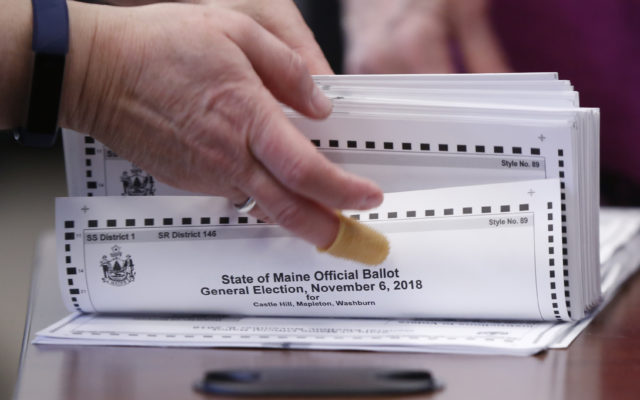
Mainers defeat Republican effort to institute voter ID and limit absentee voting
By Billy Kobin, Bangor Daily News Staff
Maine voters on Tuesday rejected a Republican-led effort to require photo identification when casting a ballot and to add new restrictions on absentee voting.
The no side of Question 1 had 60.2% of votes to 39.8% for the yes side when the Bangor Daily News and its national partner, Decision Desk HQ, called the race at 9:26 p.m. Tuesday.
The “Voter ID for ME” initiative was led by a group tied to Rep. Laurel Libby, R-Auburn, and sought to have Maine join 36 states with similar laws. It relied on the popularity of voter ID both in Maine and across the country, but it included a ream of new restrictions on absentee voting that Democratic opponents built their campaign around.
“I think this demonstrates the confidence that Maine people have in elections,” David Farmer, a Democratic operative who served as campaign manager for the no side, said.
Those proposed changes included eliminating two days of absentee voting, banning phone applications and those on behalf of family members, limiting municipalities to one ballot drop box and no longer allowing older Mainers or those with disabilities to automatically receive absentee ballots each election.
While the state would have had to issue free ID cards to voters without a license and allow voters without proper identification to complete a ballot and present a photo ID within four days, opponents pointed out the initiative would not have allowed voters to use student IDs, tribal IDs or those issued by the state’s prison system.
Libby’s side organized under a political committee called “Voter ID for ME” and raised early money to get Question 1 on the ballot from national Republican groups, including one linked to conservative judicial architect Leonard Leo.
But their fundraising dried up later in the campaign amid disagreements within the party about their tactics. That main committee raised less than $60,000 after July 1. The Democratic side, which called their chief political group “Save Maine Absentee Voting,” raised $1.6 million, which more than doubled the total from the Republican-led group.
Much of that Democratic money came in late from national interests including the National Education Association and went toward aggressive canvassing efforts that were aided by Democrats running for office in 2026, including Gov. Janet Mills and Graham Platner, both of whom are trying to unseat U.S. Sen. Susan Collins, R-Maine.
It left Libby’s side reliant on mailers and text messages late in the campaign. Those messages were generally aimed at riling up the Republican base, invoking President Donald Trump’s desire for voter ID and criticizing Secretary of State Shenna Bellows for an October episode in which ballots were found in an Amazon package. That incident is still being investigated.
Supporters of Question 1 said it would help make Maine elections “safer” and more “secure” while pointing to polling showing a majority of Mainers support photo ID requirements. Opponents countered the initiative would make it harder for Mainers to vote and noted national studies have found extremely low rates of voter fraud.
At the Cross Insurance Center in Bangor on Tuesday, Jeff Wahlstrom was among the voters who said the referendum was too much of an incursion.
“I believe that this was an effort to restrict voting in Maine and to discourage voting in Maine by people who are worried about people who are different than they are,” he said.
BDN writers Michael Shepherd and Annie Rupertus contributed to this report.